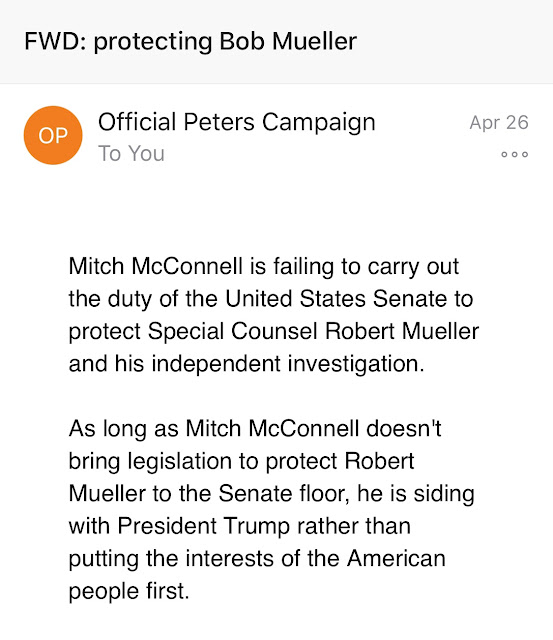Just a few days ago, I received the following in my e-mail:
This came from Gary Peters, the junior United States senator from my home state Michigan. Peters won his first-term election in 2014, just after his predecessor Carl Levin, first elected in 1978, opted to not seek re-election after six terms. (Levin, who established the record for Michigan’s longest serving member in the U.S. Senate, turned 80 in 2014.)
I am not supportive of Gary Peters. He is very much a corporate Democrat. Peters voted to renew Ajit Pai to head the FCC. He also joined Michigan’s senior U.S. senator, Debbie Stabenow, to vote on weakening Dodd–Frank for further deregulation of Wall Street.
I will not vote for Debbie Stabenow, who also takes money from the pharmaceuticals industry, and who co-sponsored a bill to let GMO’s not have to be labeled, to be re-elected here in 2018. I will not even vote for Stabenow to be re-nominated. She was first elected in 2000. That’s long enough.
Unfortunately, with 2018 shaping up to be a Democratic wave—or, if that fails, the overall seat gains in Congress still make it an advantage for Team Blue—it is likely Stabenow (or, preferably, her successor) will hold that seat in the Democratic column. (I haven’t kept track whether Stabenow has a primary challenger. I have nothing good to say, generally, about the Michigan Democratic Party.)
Fortunately, 2020 is something else. In 2016, for the first time in U.S. history, and for the first time since the 17th Amendment allowed direct elections of U.S. Senators by the states’ voters, every state with a scheduled U.S. Senate election ended up seeing a 100-percent alignment in outcomes. To be more specific: the coattails effect aligned perfectly. All states with a U.S. Senate election carried for the same political party at both the presidential and senatorial level. (In 2004, 2008, and 2012, the alignments were about 75 to 80 percent—meaning, say, 25 to 27 of 33 or 34 races.) In 2016, Republican presidential pickup winner Donald Trump flipped six states: Florida, Iowa, Michigan, Ohio, Pennsylvania, and Wisconsin. Michigan was the only state not on the schedule for 2016. And that may have spared Stabenow and Peters. But, in 2020, Michigan is on the schedule. And if Trump gets re-elected, he will likely carry Michigan with re-election. And if that manifests, it will open up the potential for Peters, should he get re-nominated, to get unseated by a challenger who is from the officially-named Republican Party. And, for Peters, it would be well-earned.
This e-mail, from Gary Peters’ campaign, has no clue where I stand. (It is not with Gary Peters.)




No comments:
Post a Comment